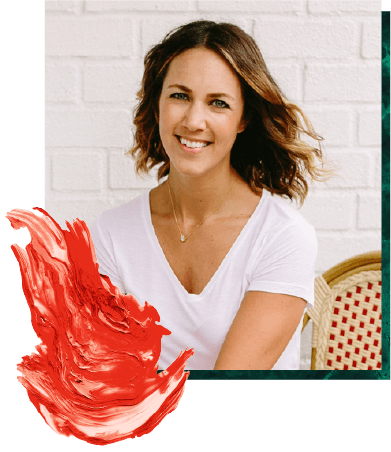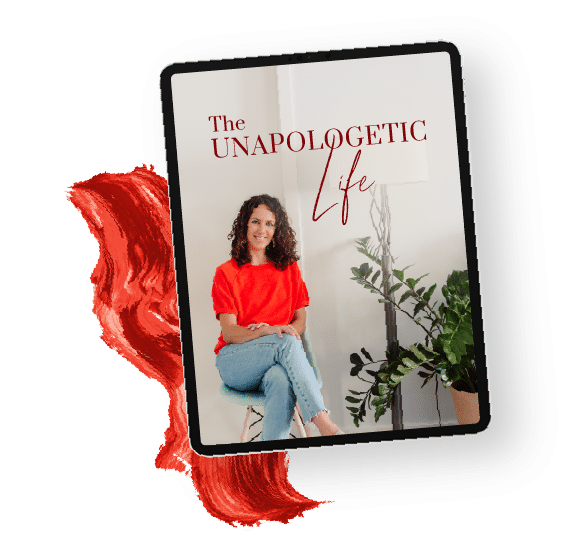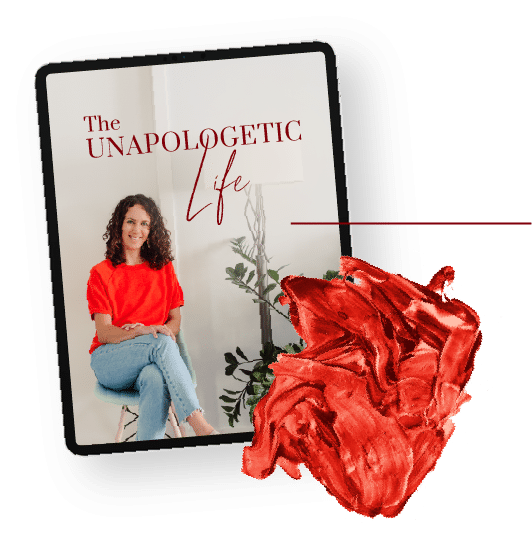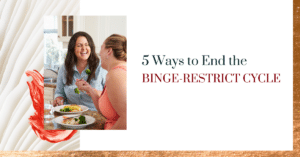How to Practice Intuitive Movement

Movement is an important aspect in our day-to-day lives and it makes up the 9th principle of intuitive eating. The philosophy behind intuitive eating is applied to intuitive movement (referred to within this post interchangeably as intuitive exercise): listen to your body’s cues to figure out what kind of movement or exercise would make you and your body feel good in that moment. In this post, we’ll dive more in-depth about what intuitive movement is and I share tips on how to incorporate intuitive exercise into your life.

Many people approach exercise as something they “should do” or something to check off our to-do list. We know it’s good for our health, yet it becomes something we either dread, force ourselves to do, or struggle to do it at all. Especially given how weight-focused and appearance-driven society, exercise becomes something we “have to” or “should do”, instead of something we want to do. This is also why it is so hard for many people to start or maintain a consistent exercise practice.
What is Intuitive Exercise/Movement?
Intuitive exercise, also known as intuitive movement, is the practice of connecting and listening to your body to figure out how it feels and what type of movement it needs that day. Instead of picking what type of exercise you think you “should” do, you use your body’s internal cues to figure out the best type, length and intensity of the workout. Intuitive exercise also means that you are choosing to move your body for the sake of self-care or health benefits (see below), instead of doing it to lose weight or burn calories.
To get started with intuitive movement, ask yourself questions like: “What does my body need today?”, “What type of movement do I feel like doing?”, or “What type of exercise would be most beneficial to my body today?”. Some days this may mean you do an intense spin class, while other days it may mean restorative yoga or a short walk. Intuitive movement is flexible, not rigid, and gives you the space to explore what feels good in your body.
Instead of exercising to burn calories or lose weight, it’s about exercising because of the positive health and mood benefits you see. Instead of forcing yourself to do X days of cardio and X days of weight-training, you get to explore movement that feels good in your body. This shift in mindset allows exercise to become more enjoyable, less stressful and ends up being something to look forward to, rather than dread. Practicing intuitive movement can help you nurture a healthier relationship with exercise and your body.
Health Benefits of Intuitive Movement
The benefits of exercise are well-established. But unfortunately, much of the time people are told to exercise with the main purpose of burning calories, losing weight, or compensating for what they eat. These types of extrinsic motivation get old quickly – when the results aren’t what you expect, or it’s taking too long to get results, many people just give up and stop exercising. Intuitive movement, on the other hand, puts the focus on internal or intrinsic motivation. You think of using movement as a form of self-care, instead of punishment, and shift your focus to the health benefits your body experiences, such as:
- Improved sleep
- Lower levels of stress and anxiety
- Increased energy
- Improved mood
- Higher bone density
- Increased muscle mass
- Better balance and flexibility
- Reduced risk of heart disease, type 2 diabetes, high blood pressure and high cholesterol
- Increased memory and mental clarity
- Reduction in chronic pain (for some people)
Tips to Practice Intuitive Movement
1. Do a quick body scan. A short body scan is a great way to begin tuning into your body’s physical and emotional state. It takes less than a minute and can even be done while you are lying in bed after you wake up. Starting at the top of your head, focus on each of your body parts and how they are feeling. Head, neck, shoulders, arms, chest, back, etc – making your way slowly down your body. This will help you figure out how your body is feeling that day – whether it is tight and sore, stressed and wound up, or loose and energized.
2. Avoid rigid structure and all-or-nothing thinking. When you try to keep a strict exercise routine it can mean that, if it doesn’t happen, you end up feeling guilty which can cause more stress and lower motivation to exercise the next time. Intuitive exercise is flexible, so if you end up missing a workout, you show yourself some compassion, be understanding for why you couldn’t make it to the gym, and then move on. Research shows that self-compassion is linked to increased motivation and improved health behaviors so in the long run, this can actually help you maintain a consistent exercise routine. Similar to intuitive meal planning, intuitive exercise can have a loose structure to maintain somewhat of a plan while still having flexibility. This can look different for everyone and can even change week to week. For me, there are some weeks that I pencil in a few gym days and/or yoga sessions into my calendar then see how I feel that day. Then there are other weeks that I don’t make any plan at all, but ask myself each morning “Do I feel like doing any exercise or movement today?” and, if yes, “What would feel good today?”
3. Choose a form of movement or exercise that you enjoy. There is no reason to do exercise that you dislike! If you find yourself dreading your workout, it’s a sign that you’re probably not engaging in forms of movement that makes you or your body happy. Try to figure out what brings you the most joy and what feels the best for your body. If you can’t think of any types of movement that you like doing, then it’s time for some exploration and trial and error. Look into different classes, whether it’s in person classes (think yoga, pilates, kickboxing, ballroom dancing, spin class, water aerobics, belly dancing, etc) or online streaming workouts or videos. Or get outside and try hiking, biking, walking, jogging, or – in the winter – cross-country skiing or snowshoeing. I wrote a blog post all about how to find body positive fitness options.
4. Pay attention to how the movement makes you feel. Check in with yourself after you finish exercising – how does your body feel? Did your workout or movement that day leave you feeling energized? Do you feel stronger or have less pain? Focus on the internal, intrinsic benefits that you notice. Note: if you’re feeling extremely fatigued and drained after your workout, this is a sign that you’ve either overworked and pushed your body too far and that you may need a rest day.
5. Think about your “why”. Listen for that voice that pops up in your head when you think about exercise or movement. Are you exercising because you think you “should” or because you want to lose weight or because you want to burn calories? Notice when those “shoulds” pop-up and get curious about it. Then focus on finding a reason to move your body that has nothing to do with weight loss or calories. This could be for the way it makes you feel, for the physical health or mental benefits, or because you know it will help you get a good nights sleep. Reframe exercise as something that you are doing / can do to take care of your body (rather than punish it).
6. Do not be afraid of rest days. Rest days are just as important as active days, as they allow your body to recover and heal. When you begin to strengthen your interoceptive awareness skills and build up body trust, you learn to accept whatever it is your body needs that day. Trust that when your body needs a rest day, it needs a rest day.
7. Invest in comfortable clothing. No one likes feeling uncomfortable in what they’re wearing – it leaves you feeling insecure and even alters your mood. Clothing matters – purchase some fun, cute, comfortable workout clothes that you feel good in. Check out brands that offer a wide range of sizes, like Girlfriend Collective (up to 6XL), Superfit Hero (up to 5XL), Target’s The Joy Lab Line (up to 4XL), K-Deer (up to 4XL), Fabletics (up to 3XL), Good American (up to 4XL), Dear Kate (up to 3XL) and Knix sports bras (that include F & G cups).
What are some of your favorite forms of intuitive exercise that make you feel good? Share with me in the comments below!
Are you interested in learning more about intuitive eating?
Check out my Unapologetic Eating 101 Course, an online, self-paced program to liberate yourself from dieting and make peace with food and your body.
My team and I also offer virtual one-on-one support – you can check out our virtual intuitive eating nutrition coaching packages.
My book, Unapologetic Eating: Make Peace with Food and Transform Your Life, is also a great resource that includes information, research, and reflection prompts to help you move away from dieting and come back home to your body, so you can live your most unapologetic, liberated life.
Author Bio
This article was written and reviewed by Alissa Rumsey, MS, RD, CSCS, a registered dietitian and Certified Intuitive Eating Counselor. She specializes in weight-inclusive care, intuitive eating, body image healing, mindfulness, self-compassion, and healing from chronic dieting, disordered eating, and eating disorders. Alissa holds a Bachelor’s Degree in Nutrition and Exercise Science, and a Master’s Degree in Health Communications, and is also an NSCA Certified Strength and Conditioning Specialist.
10 Comments
Leave a Comment
share the love

about
Alissa Rumsey, RD.
Alissa Rumsey, MS, RD, CDN, CSCS (pronouns she/her/hers) is a registered
dietitian, nutrition therapist, certified intuitive eating counselor, and the author of
Unapologetic Eating: Make Peace With Food and Transform Your Life. Alissa is
passionate about helping people reclaim the space to eat and live,
unapologetically.

A twice-a-month round-up of inspirational stories, lessons, practical tips and encouragement for living your most authentic, unapologetic life.
The Unapologetic Life
RECENT POSTS

The Unapologetic Life
A twice-a-month round-up of inspirational stories, lessons, practical tips and encouragement for living your most authentic, unapologetic life.











I have been really wanting more movement lately. I find it quite easy to find an activity that feels good to my body or that I enjoy as I’ve always been a rather active person. However, I’m finding that even when I do activities I enjoy and try to do them for the enjoyment, they all lead me to having intrusive thoughts about dieting. For example, I did a dance workout last night. I love dancing! And it was a good workout! Afterwards, I was hungry and immediately thought, “you can’t eat right now.” it’s as if body movement and restrictive eating are so heavily associated in my mind that it is very difficult to exercise without these thoughts. Any ideas on what to do with this?
Hi Rachel, great question! It’s awesome that you are aware of/noticing these diet mentality thoughts – they can take a while to go away (and some of them may never *fully* go away, but just become less and less frequent), but in the meantime what you can do is be aware of them and then not act on them. So in this case, you’d call out the “you can’t eat right now” as diet mentality, and then eat something anyway. Does that make sense?
Hey I’m loving this post. Intuitive movement has changed my life. I love biking, running, walking, and dancing. From time to time I like to try a new fitness class to see what it’s all about and to get outside of my box.
That’s wonderful Allison, sounds like you’ve been exploring and have found several forms of movement that feel good to you – thanks for sharing!
My job is very physical and I also have fibromyalgia. Often at the end of my shift I am too exhausted and in pain to move. How can I find the energy to get some exercise in?
Hi Chantal, that’s a great question. Part of intuitive movement is about checking in with your body to see what kind of movement (if any) would feel good. If you’re feeling pain, it might be more helpful to rest on those days – especially since you mentioned you have a physically active job (this “counts” as movement too!). If you still want to do some type of activity, try to find something that won’t add to the pain, like a gentle yoga (yin or restorative yoga are my favorites). If you’re not feeling pain and still lack energy, the next things to check would be if you’re eating enough throughout the day, how much sleep you’re getting, and also what your stress level has been. I hope this helps 🙂
Hi Alissa,
I absolutely love what you wrote about intuitive movement and I am all-in with this approach that is way more sustainable and loving that what the diet culture tries to convince me of doing ( modify my appearance to fit in a box of beauty and not listening to my needs). I just wonder what you respond to people who wants to reach their optimum health by following the “X minutes of moderate intensity exercise per week”. How can you merge the intuitive movement and the recommended moving time pronounced by the world health organization(WHO) that adds a certain structure. I struggle to find an answer about that. Thanks so much!
Hi Dominique – that’s a great question! One thing that I’ve seen make a big difference for my clients is when they focus more on how the movement feels instead of focusing so much on how much time they spend exercising. Focusing on how we feel usually helps make that activity more consistent in our lives instead of thinking “I have to exercise for X minutes today”. Some people get more stressed thinking they “have to” do a certain amount of exercise in a day and then feel like “failures” if they can’t make it happen. I’d much rather see someone consistently get less than the “recommended” amount of exercise if that means they are doing something they enjoy and that makes them feel good. Plus, the amount of activity we get in the day doesn’t have to happen all at once – it can be spread out throughout the day. While those “recommended” amounts can sometimes be helpful to get a baseline, it’s not the be-all-end-all when it comes to health so it has to be viewed with some nuance too. Hope this helps, thanks so much for your question!
Hi Alyssa,
It’s currently 9:59 pm and as I’m preparing to get some sleep, I had intuitive movement on my mind. Honestly, it was something I avoided because of my relationship with working out before Intuitive Eating (going a little over a year with it and I love it). I wanted to make sure that the next steps I take to add movement to my body aren’t one where I’m frantically counting calories again or stepping on the scale when it’s not necessary anymore. Now, I’m at the stage of gathering information on how to ease on to it, and then I found your blog. I’m writing this tonight to let you know that I am truly grateful for this information. It’s really EXACTLY what I’ve been looking for. Thank you for all the work that you do! Have a great rest of everything <3
Thanks for sharing, Sheena! Glad you found this information helpful 🙂 So great to hear how intuitive eating has shifted how you incorporate movement into your life. It sounds like you’re being more intentional about adding movement back in.